
It was not good for on that Friday evening, 30 November as we were caught in a very bad traffic jam. We were sure we were going to miss it or the tickets would be long gone by the time we reached there. We arrived around 8.00 pm, rushed to the hall and to our pleasant surprise, there were still tickets available. We had a quick meal in the nearest restaurant and settled in for the show.

I was not familiar with Koto music and did not know what to expect. Sawai Kazue is a diminutive lady full of bubbling energy. And when she poised over her koto, we saw a master over her instruments and we waited anxiously for the first note. When she plucked the string, the koto screamed. It screeched and groaned. It moaned and gave out frightening cries. The minute the first note was struck, the vibration echoed from the hollow cavity and gripped our heart. The shrieks tore at us and distressed us with the harsh discordant sounds. We were stunned for this stringed instrument that looked so much like a Guzheng sounded nothing like its melodious notes floating on air. They were harsh, sharp notes that rend and tore. We sat there arrested by its raw power that seized us. If music is sound that that touches your soul, then this is music but it is unlike any music I knew. It distressed yet we took pleasure in that it could move so.
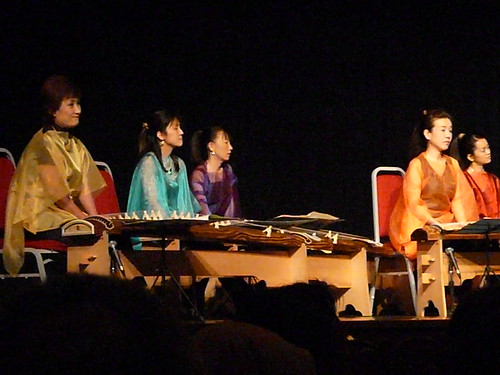
I loved it but at the same time I was disturbed by it. I thought music soothes. Lured you to a reflective mood, put you into a dreamy state, envelope and intoxicate you with its melody. Koto music shook you up violently from your slumber, slapped you to get your attention, and petition you to hear their grievances. I used to think that Erhu is the saddest sounding musical instrument. Maybe it is still is to me. Mournful may be a better word. It is like a man mourning the death of his lover. The sorrow feels like constant weight shifting on the heart. But the Koto is like a mother screaming at the death of her child. The pain searing as if the heart is cracking under the strains of unbearable sorrow. I love it for its intensity but it is a disturbing intensity.
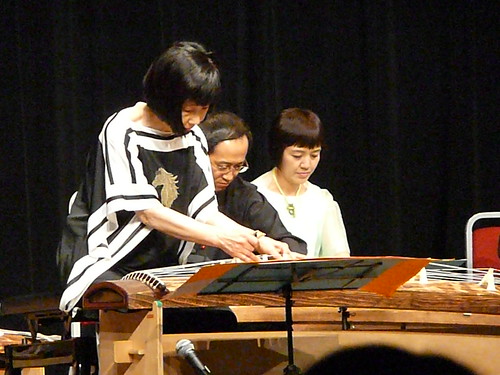
Sawai Kazue played Yatshuhashi Kengyo’s “Rokudan no Shirabe” (Study in Six Steps) as her first piece with her 13 strings koto and introduced me to an instrument that produced individual harrowing notes that somehow combined to a musical rendition which is highly affecting. As it played on, I began to recognize some of its typical notes that formed the unique characteristics of Japanese music, only I didn’t know before that it came from Koto. While most stringed musical instruments flows and merges (and Koto also do the same), its most typical emphasis is in its emphatic prodding steps like the highly dramatic movement of Japanese dance. Maybe one inspires the other?
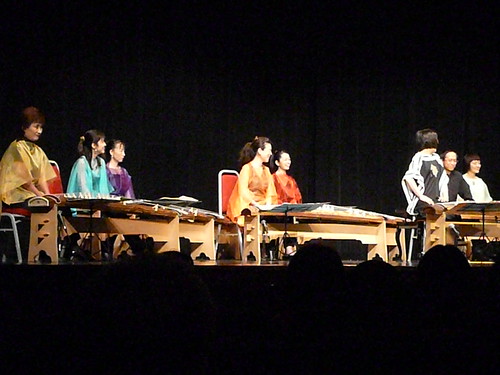
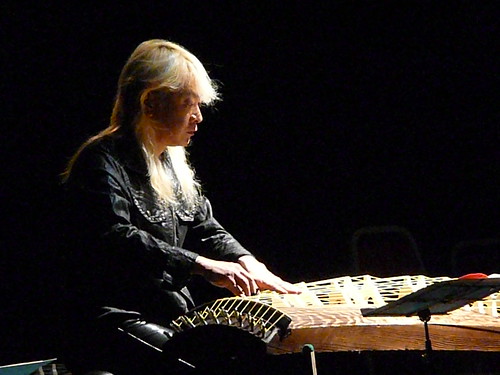
“Dosei” is about two different voices from the earth, the sound of wood (koto) and song of the bamboo (shakuhachi, a end-blown flute). Wood spoke with its earthly voice, deep, hoarse and ancient. Bamboo sang through the woods riding on the wing of the wind that rustles through its leaves. Sawai Hiraku played the koto while Motonaga Hiromu blew the shakuhachi. Maybe it was because of the piece or was it because of the softer note of the 17 strings, I was not hit with the explosive force of her mother’s performance. I liked the hollow vibrating song of the flute better. What I liked was Hidaru’s playful pushing of his hips at the end of the performance to acknowledge the crowd’s applause. A most uncharacteristic gesture of a master of traditional instrument.
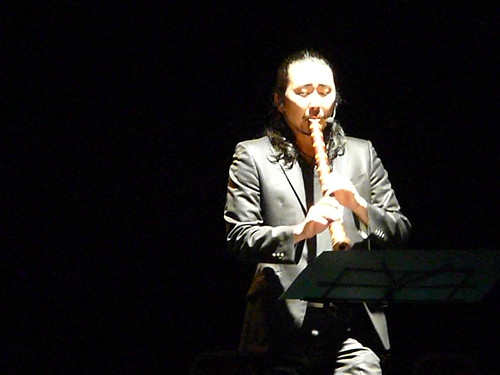
And when the haunting cry of the flute sounding like a lone wolf howling to the moon combined with the raw power of the Sawai Kazue’s amazing talent, it was as if we were transported back to the time when the ancients prayed to the mysterious moon in “Jogen no Kyoku”. What a splendid performance!
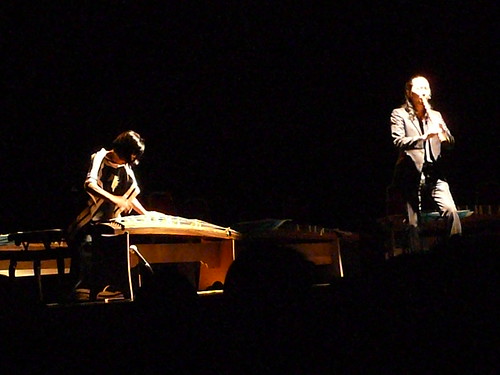
The final act “Futatsu no Gun no Tameni” showed the wonderful range and versatility of the 13 and 17 strings koto. It mixed and blend like a boisterous crowd, together and yet apart. Every now and then, a singular will raise above the din and made its distinctive sound heard above it. In this performance, we heard what the koto are capable of, from flighty steps to wavering warbles. I would have thought this was the best koto can provide had I not heard Sawai Kazue’s solo performance.
The night ended too fast.

We were invited onstage to ‘play’ with the koto. It was a little surprising to me and greatly appreciated that these musicians allowed us mortal to touch and play with their prized instruments. Looking now at the tender affection these musicians showed and explained to us uninitiated, I could help but think what a contrast they showed when they were coaxing the instruments to produce the sound they want. Unlike Guzhen players that seemed to gently draw out the sounds, the koto players seemed to torture it out of their. They compel it out with a surprising passionate violence. They plucked at it with force, beat it, pulled it and you feel like they are squeezing it out from a reluctant uncooperative partner. I am sure they loved it but it sure looked like a strange love to me.

Among all these angels in fairy dresses, I could easily lose my heart. But if I were to be given the choice of spending a day with one of them, without hesitation I would choose to spend it with Kawai Kazue.
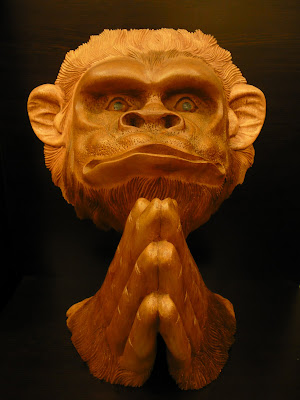
No comments:
Post a Comment